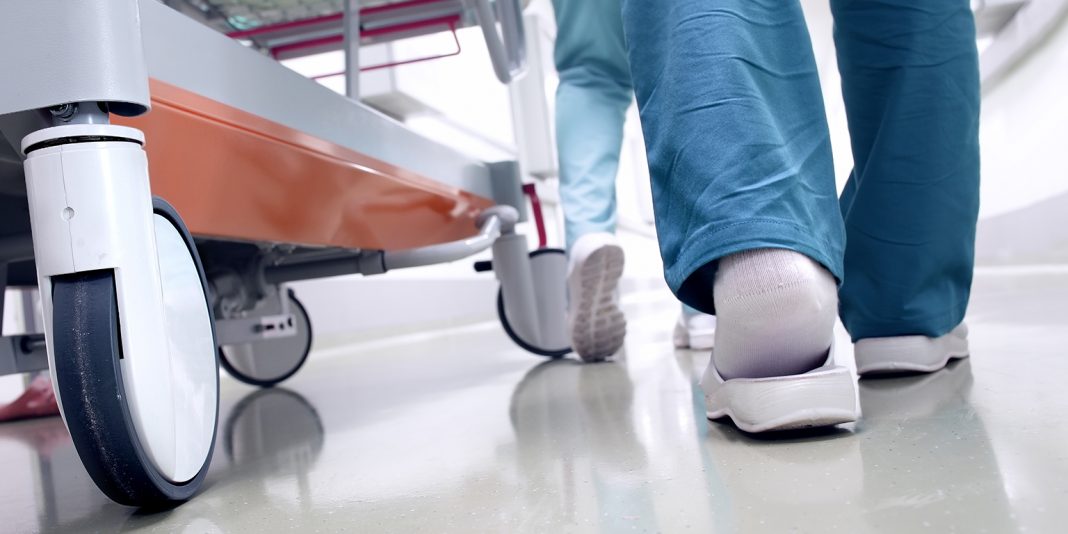Ground rules have been set for spending the $38m for relieving DHB nursing workloads, but the money is still to be allocated one month on from ratifying the nurses’ new pay deal.
The DHB multi-employer collective agreement (MECA) ratified by NZNO members in early August included $38m towards the immediate, short-term relief of nursing and midwifery workload pressures. But allocating of funding has been awaiting the finalising of the process, issued on August 29, by which DHBs get funding approval for spending their share.
Workload issues and safe staffing concerns were a major trigger for stressed nurses taking 24-hour strike action on July 12 and prompted a Minister of Health-initiated safe staffing Accord to be signed between the DHBs, NZNO and the Ministry of Health.
Nursing Review approached all the DHB directors of nursing seeking an update on where individual DHB plans were at for prioritising the spending of their share of the $38m funding. The request was redirected to the Ministry of Health’s acting chief nursing officer Dr Jill Clendon to respond on the DHBs behalf.
Clendon said the Ministry has now provided guidance to the DHBs on the use of the $38 million and the ways that staff can be recruited using the funding.
Hilary Graham-Smith, NZNO associate professional services manager, said it was important that there was some ground-rules so the money was spent appropriately – including not using it for existing nursing vacancies or for developing new services.
Clendon said new graduate registered and enrolled nurses were one source for obtaining extra staff, while another would be nurses who have left the profession and may be willing to return, nurses coming from overseas, and nurses working in other sectors.
Nursing leaders in the residential aged care sector in particular have expressed concern that the recent pay deal and $38m for extra staffing could see them losing more nurses to the DHB sector and push their nursing workforce into crisis mode.
“The Ministry and DHBs are aware of the implications of nurses coming from other sectors to fill vacancies and will be working on approaches that will minimise this impact,” said Clendon. She said the DHBs and the Ministry were also aware that new graduates need support to transition to practice effectively and were working on ensuring that support was in place.
Graham-Smith it was very clear in the Ministry of Health guidance to DHBs that decisions on how to spend the money had to be agreed by joint DHB NZNO councils and signed off by the DHB-NZNO Safe Staffing Healthy Workplace (SSHW) governance group.
She said hopefully it would not be too long before DHBs had their plans to the Safe Staffing Healthy Workplace governance group, of which she was a member, ready for approval. “We don’t want to stall this process – we really want to support the DHBs to get on with the work.”
Graham-Smith also believed that some DHBs were already starting to have those conversations but they would not receive their share of the funding until they had received SSHW sign-off of their plans.
“We [the governance group] need to be on to that really quickly and NZNO needs to be responsive in terms of getting round the table with the DHB to have that conversation [leading to plan].”
Graham-Smith says DHBs may choose to use CCDM methodology to highlight understaffing hot spots. “But I would say that directors of nursing and nurse leaders will have a very good idea of where the areas that they could best spend that money.”
“It’s not enough – we have to acknowledge that 500 nurses across the country is nowhere near enough,” she said. “So they have to think about where the pinch-points are and who is going to get the most value out of getting some additional staff in the short-term as we keep on rolling out CCDM.”
SUMMARY
- DHB NZNO MECA included $38m towards immediate relief of nursing and midwifery workplace pressures while waiting for CCDM to be fully implemented.
- $38m is equivalent to 2% of the national cost of DHB-employed nursing and midwifery workforce (the equivalent of about 500 nurses) and is allocated to each DHB on a population-based funding formula.
- Plans for spending DHBs’ share funding must first be approved by CCDM Council (joint NZNO-DHB council set up for implementing safe staffing Care Capacity Demand Management system) and then by SSHW (Safe Staffing Healthy Workplace) unit governance group.
- Recruiting of additional staff may be both in the DHB hospital or community setting and the additional staff employed maybe registered nurses, enrolled nurses, midwives or health care assistants (HCAs) depending on the skill mix required.
- The immediate relief staff taken on using the $38m funding does not replace the DHBs’ requirement to calculate the full-time equivalent (FTE) staffing required to be employed under the CCDM system to ensure safe staffing levels for each DHB ward, unit and service.
- CCDM is to be fully implemented in all DHBs by June 30 2021.
Table: Breakdown of DHB allocation of the $38m for immediate relief of staffing pressure
| DHB | Population-based funding formula allocation |
| Auckland | $5.67m |
| Bay of Plenty | $1.92m |
| Canterbury | $4.34m |
| Capital & Coast | $2.58m |
| Counties Manukau | $3.56m |
| Hawkes Bay | $1.29m |
| Hutt | $1.15m |
| Lakes | $0.85m |
| MidCentral | $1.42m |
| Nelson Marlborough | $1.14m |
| Northland | $1.51m |
| South Canterbury | $0.44m |
| Southern | $2.46m |
| Tairawhiti | $0.41m |
| Taranaki | $0.89m |
| Waikato | $3.67m |
| Wairarapa | $0.30m |
| Waitemata | $3.54m |
| West Coast | $0.31m |
| Whanganui | $0.55m |
| Total | $38m |





















